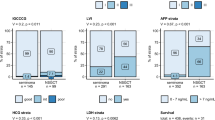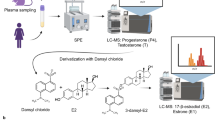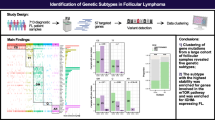Abstract
A FEW years ago I observed that female rats and mice, given subcutaneous injections of a watery suspension of B. tumefaciens, or subcutaneous implantations of the crown gall tumours of pelargoniums, appeared to reach sexual maturity before control animals did. Harde1, Yano2, Dodds3, and others, have given experimental proof of the possibility of a carcinogenic sensitisation of animals through administration of sexual—especially the follicular—hormones.
This is a preview of subscription content, access via your institution
Access options
Subscribe to this journal
Receive 51 print issues and online access
$199.00 per year
only $3.90 per issue
Buy this article
- Purchase on SpringerLink
- Instant access to full article PDF
Prices may be subject to local taxes which are calculated during checkout
Similar content being viewed by others
References
Harde, E., C.R. Soc. Biol. Paris, 116, 999; 1934.
Yano, J., Acta Dermat. Kyoto, 23, 20; 1934.
Dodds, E. C., Vehr. I. Intern. Kongr. Karnpf Krebs, 2, 181; 1933.
Havas, L., and Caldwell, J., Ann. Bot., in the press.
Author information
Authors and Affiliations
Rights and permissions
About this article
Cite this article
HAVAS, L. Follicular (strus) Hormone and Plant Tumours. Nature 136, 516 (1935). https://doi.org/10.1038/136516a0
Issue date:
DOI: https://doi.org/10.1038/136516a0
This article is cited by
-
Growth of Induced Plant Tumours
Nature (1939)
-
Effects of Trimethylamine in Plants and Animals suggestive of Hormonal Influence
Nature (1938)
-
Ascorbic Acid (Vitamin C) and Phytocarcinomata
Nature (1935)



